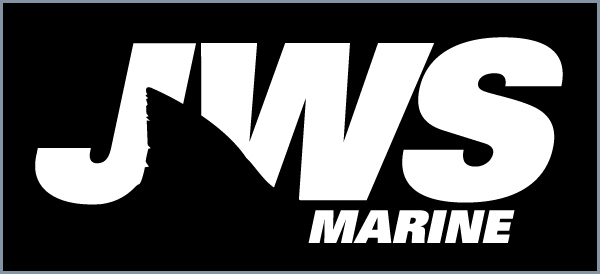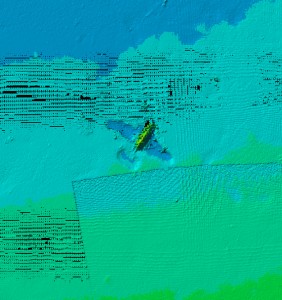Aircraft
Boeing Model 21: Record of Crash
Published 6/6/1925
“Edward Hubbard, Seattle Flyer, Plunges Into Lake in Navy Plane, Escapes Death”

(click to enlarge)
Noted comment within article: “The seaplane, badly damaged, was towed to shore.”
It is unlikely any substantial portion of this aircraft remains in the lake. But I would expect that as a result of crashing nose first into the water at a high rate of speed (from a fall that originated at 4000 ft) at least some of the wreckage remains in the lake.
Boeing Model 21 (NB-2)
Date: 6/5/1925
Type: Boeing Model 21 (NB-2)
Common Name: Boeing Biplane Seaplane Trainer
Serial/BU#: A-6788
Sqd/Group: US Navy
Pilot: Hubbard, Ed
Rank: Civilian
Injuries: Minor
Remarks: Engine Failed
Recovered: No Information/Unknown
Other Remarks:
“plunged into Lake Washington off Madison Park”
“crashed nose first at high rate of speed”
“[took off from] Puget Sound airway hanger at Madison Park”
General Info:
As Boeing became recognized as the leading designer of military aircraft, it received in 1923 a Navy order for the trainer Model 21, or NB-1 and NB-2. The company delivered 70 Model 21s in 1924 and 1925.
Variants
- VNB-1 – prototype (1 built)
- NB-1 – original production machine with Lawrance J-1 radial engine (41 built)
- NB-2 – production machine with Wright-Hispano E engine (30 built)
- NB-3 – one NB-1 with lengthened fuselage and modified empennage to improve handling, and Hispano-Suiza E engine.
- NB-4 – one NB-1 converted similar to NB-3, but with Lawrance J-1 engine.
The NBs were produced in two batches; the first (NB-1) were powered by radial engines and the second by war-surplus V-8s still in the Navy’s inventory.
TBF-1 Avenger (Sonar Image)
Grumman F4F Wildcat & TBF-1 Avenger
F4F Wildcat and TBF-1 Avenger


(click to enlarge)
Collision Details:
Date: August 17, 1942
- 4 Grumman Avenger bombers making simulated group torpedo run on Meydenbauer Bay, Lake Washington
- 3 Wildcat fighters attempting to oppose run
- 1 Wildcat held his attack too long
- Mid air collision between 1 Wildcat and 1 Avenger; both aircraft crash and sink
- Avenger Pilot, Radioman Injured, Tail Gunner Killed
Operating out of NAS Seattle at Sand Point, four Avenger torpedo bombers made a simulated torpedo attack on a target in Lake Washington, located near Meydenbauer Bay.
Three Wildcat fighters were simulating defense of the target.
The torpedo bombers were traveling east, toward Bellevue, at about 200 knots. The three fighters made an opposing run from ahead at about 300 knots. The pilot of one Wildcat held his attack too long to affect a safe recovery and collided with one of the Avengers. The fighter pilot continued west, toward Seattle, lowered his landing gear to slow his plane and bailed out. The Wildcat went into the lake off Leshi.
The damaged Avenger and other aircraft flew north toward NAS Seattle. According to Seattle Times cartoonist, Sam Groff, who was fishing
from a boat,
“I saw five planes flying in formation. There were three torpedo bombers and two fighters. Suddenly one of the bombers began to tip on
its right wing. It was getting lower and lower. The next instant it struck. The impact tore off the right wing.” (Seattle Times, August 18, 1942).
After the crash, the pilot, F. W. Janney of Philadelphia, PA, and top turret gunner, Charles W. Price of Houston, TX, managed to get out of the damaged
Avenger before it sank. However, the radioman/ventral gunner, Bernard J. Viscovich of Shamokin, PA, was trapped in the plane and
drowned.
Another eyewitness, Paul Moran, provided this account of the crash:
“I was on a sailboat near the crash site when it occurred. We had been to a marina in Houghton and were returning toward moorage between Juanita and Champagne Point. Someone aboard shouted “look at that plane!” and when I looked it was approaching the water at high speed and at a fairly steep angle. When it hit, the wings appeared to fold forward and all kinds of debris threw up spray ahead of it. A large piece of debris, which we thought was the propeller, cart wheeled across the water ahead of the fuselage. We saw what we thought to be the pilot thrown 20 to 30 feet into the air. We turned the boat around and proceeded to the crash site to see if there were any survivors. We found a person floating in his life jacket who was dazed and barely conscious. We could see another person also floating in the water some distance away that seemed to be in slightly better shape so we stayed with the first person to be sure he wouldn’t drown. We were afraid to bring him aboard because we didn’t know the extent of his injuries. We held him along side until a crash boat arrived from NAS Seattle which retrieved both persons.” (Personal Communication, December 3, 2004).
Artist’s 3D Rendering of Wildcat today:

(click to enlarge)
F4F Underwater Images:

(click to enlarge)
Seattle Times, August 18th, 1942
“Planes Victim’s Body Hunted”

(click to enlarge)
Avenger Underwater Images:

(click to enlarge)
FG-1D Corsair (Sonar Image)
F4F Wildcat (Sonar Image)
PB4Y-2 Privateer (Sonar Image)
Sonar Images of PV-2 Harpoon
SNV-2 Valiant
I made a dive on a Vultee SNV-2 Valiant aircraft on Sunday. This is one of Lake Washington’s little known aircraft wrecks. The Valiant was a basic trainer during WWII. There were some 11,000 produced between September 1939 and August 1944 to meet the training needs of the Army/Navy.
Valiant Vital Stats:
Manufacturer: Vultee
Designation: SNV-2 Valiant
Aircraft Type: Trainer
Wing Span: 42ft, 2in
Height:12ft, 5in
Length: 28ft, 9in
Top Speed: 166mph
Range: 516 miles
Empty Weight: 4360 pounds
Crew: Student pilot and instructor
Service Ceiling: 16,500ft
Engine(s): one 450 hp Pratt & Whitney R-985 Junior Wasp radial engine
The story on this particular wreck was that the pilot came in high on an emergency landing due to engine trouble. He overshot the runway then attempted to come around again when the engine cut out entirely. This forced a water landing which ultimately left the Valiant where it remains today (60+ years later): 130ft below the surface of Lake Washington.
The wreck lies horizontally on the bottom and it is extremely fragile. As supplies of strategic metals became prioritized during WWII, later models of the SNV incorporated wooden structural elements, including plywood panel skins. This aircraft was one of those later models and the underwater environment has not been kind. It’s BF Goodwrench tires jut upwards from the fuselage, the bent propeller and engine sit nicely out in front, and the gem of the wreck, the data case, is resting just inside the torn and jagged fuselage, still clearly marked, ‘DATA CASE.’ On the wings the White Navy star is visible as well as the, ‘US NAVY’ lettering.
Included with this post are some underwater photos and a sidescan sonar image.
JS

Avenger Documentation
Spent most of the weekend on or in the lake, working on tying together and documenting the Avenger.
Saturday morning the team of Kurt, Miranda, Walter & Mark dove with the objective of connecting the dots (I played boat driver for this one). We had previously connected the main section of fuselage to the tail (about 30 feet away) with cave line. We had a bearing and distance (85 feet) to the starboard wing, lying on the bottom. From the starboard wing, we had another bearing and distance (about 50 ft.) to two four foot sections of wreckage (status unknown). They dropped on the fuselage, tied in and ran out 90 ft. of line. Spaced themselves out on the line and swam a quick search pattern to locate the wing. Once on the wing, they repeated the process to locate the two other pieces of wreckage. It took about 25 minutes for them to locate and connect the pieces and they incurred about 30minutes of deco. So just about an hour long dive all together with a max and average bottom depth of 175ft.
Sunday morning, the team of myself, Rich, Walter & Mark returned to the site with the video camera. With all the pieces connected together we were ready to finish documenting the site. We spent a leisure 30 minutes on the bottom enjoying the site; making sure we documented everything. Once edited we’ll publish a copy of the video to the Naval Archives/Historical branch for their records.
KUOW Radio
Spoke with KUOW yesterday about diving in the lake:
Audio can be found here: http://www.kuow.org/program.php?id=12041
Diving in Lake Washington
John Sharps is a diver who has discovered old ferry boats, World War II aircraft and all manner of objects on the bottom of Lake Washington. He joins us to talk about his passion for diving and Pacific Northwest history as preserved in depths of up to 200 feet.
Related Links:
PV-2 Harpoon & USRC Scout
Made a couple dives in the lake on Sunday…
The first dive was on the PV-2 Harpoon – a World War II patrol bomber that was ditched after take-off in Sept 1947. It’s a great dive, the plane is stuck nose down in the mud and the tail is broken off so there is opportunity to drop down inside. 50 caliber machine guns still in the turret. Max depth was about 145ft.
The second dive was much shallower but more historic. Back when we were looking for the Avenger we found via side scan the hull of a 60ft ship lying on its side in relatively shallow water (90ft). So our second dive was on this wreck and it turned out to be a great one. 5 of us made the dive. The three man team I was on shot video and took a bow to stern measurement. The second two man team took beam and draft measurements. On the bow of the ship you can still just barely read what we collectively thought was the name, ‘SCOUT.’
Researching vessels by that name later that evening and comparing notes to our length and beam measurements we were able to match Scout to an early 1900’s era Coast Guard Revenue Cutter. One of the first that was gasoline powered. It was based in Port Townsend, WA where its primary purposes were to thwart illegal immigration and opium trade. In 1915 it was transferred via private sale to Puget Sound. Other than that the rest of its history above water remains a mystery.
Eyewitness Account
We got a great e-mail from an eyewitness to the Avenger crash today. He was a 12yr old passenger on a sailboat the day of the accident. Here is his account as he remembers it today:
From: Paul Moran
The Dives Today
Successful dive on the Avenger today; got out on the tail section for the first time. The tail is standing upright, horizontal stabilizers are about 16ft across.
With three main portions of the wreck; the main fuselage (that includes one wing), the tail section and then the other wing sitting some 85ft away – it appears a portion of the tail fuselage is missing. This would have been the section where the ventral gunner sat. Since he died during the accident (went down with the plane) it is possible the Navy recovered that portion of the craft, including his body, back in August of 1942.














